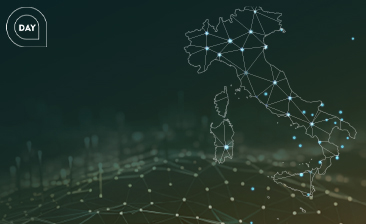
Acea for World Energy Saving Day
Piazza del Popolo in Rome is one of the most visited squares by tourists from all over the world and in Roman times was one of the main entrances to the city. In the centre of this fascinating elliptical-shaped square are the imposing Flaminian obelisk and the Fountain of Lions. On the walls bordering the ellipse to the east and west are the Fountain of the Goddess Rome and the Fountain of Neptune. The northern part features the monumental entrance of the Porta del Popolo, at the side of which stands the basilica of Santa Maria del Popolo. On the intersection between the square and the three streets to the south (Via del Corso, Via del Babuino, and Via di Ripetta) stand the two "twin churches": Santa Maria dei Miracoli and Santa Maria in Montesanto. Starting from the square along the side of the basilica of Santa Maria del Popolo, it is possible to access a long flight of steps that leads to the famous Pincio Terrace, which offers a panoramic view of Piazza del Popolo and Rome.
The Flaminian obelisk is located in the centre of Piazza del Popolo and is 36.5 meters high (25.90 meters if the base and cross on top of the obelisk are not taken into account).
Originally dedicated to the Sun God, the obelisk was transported in 10 B.C. from Egypt to Rome during the era of Augustus. Formerly placed at the Circus Maximus along with the Lateran Circus to celebrate the emperor's conquest of Egypt, it was later restored and erected in the centre of the square by Domenico Fontana in 1589. Later, in 1823, by order of Pope Leo XII, Giuseppe Valadier built the Fountain of Lions at the base of the obelisk in Piazza del Popolo with four circular basins and as many stone lions in Egyptian style.
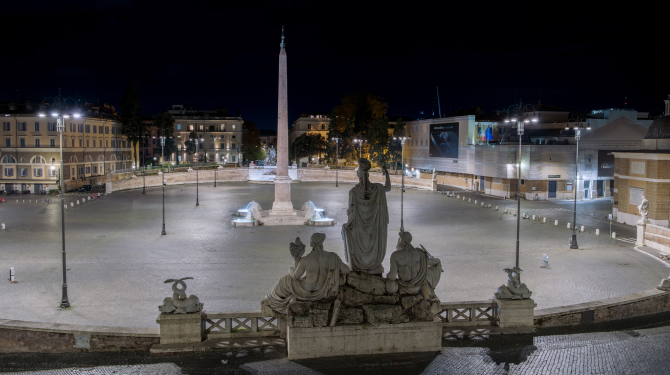
Santa Maria dei Miracoli and Santa Maria in Montesanto are the two Baroque churches located at the side of Piazza del Popolo and known in Rome as the "twin churches". Seemingly identical, due to an optical effect, they are actually different from each other, starting from the shape of the bell towers, domes, and the floor plan. The two churches were designed during the 17th century originally by Carlo Rainaldi and later completed by Gian Lorenzo Bernini with the collaboration of Carlo Fontana. Santa Maria in Montesanto, also known as the Church of the Artists, has hosted a special Eucharistic celebration every Sunday since 1953, in which members of the city's art world take part. In addition, funerals of personalities related to culture and entertainment are often held in this church.
The square is home to three fascinating fountains: the Fountain of Lions, the Fountain of the Goddess Rome, and the Fountain of Neptune. In the centre of the square is the Fountain of Lions, built by Valadier, which surrounds the Flaminian obelisk. Characterised by round basins, it is dominated by Egyptian-style white marble lions gushing out jets of water. In the centre of the eastern hemicycle is the Fountain of the Goddess Rome, adorned with a large sculptural group depicting the armed goddess surrounded by statues representing the Tiber and Aniene rivers. At her feet stands the figure of the she-wolf feeding the twins. In the opposite hemicycle, the imposing sculptural group decorating the Neptune Fountain stands out: a statue of the God wielding a trident in his right hand while at his feet two tritons ride dolphins.
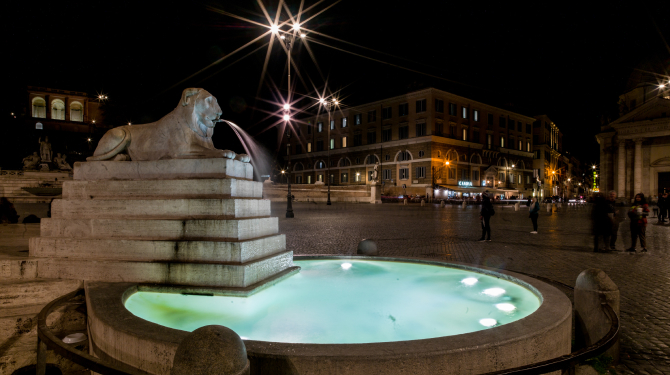
Six new projectors with state-of-the-art LED lights and precision optics were used to illuminate the obelisk in Piazza del Popolo, enhancing the colour effect of accent lighting and producing a reduction in energy consumption, which is no more than 300 W. The work also included maintenance of the lighting of the Fountain of Lions, consisting of four basins at the base of the obelisk, and the other two fountains located on either side of the square: the Fountain of the Goddess Rome and the Fountain of Neptune. Again, the old lighting points (twenty for each fountain) were replaced by forty immersible LED floodlights. The new fixtures, which complement the recent LED transformation of the square's streetlights, are equipped with a remote control system that allows the lighting to be managed more quickly and efficiently. The Piazza del Popolo lighting project was carried out by Acea and was a collaboration with Roma Capitale-Department of Infrastructure Development and Urban Maintenance (SIMU).
Discover the latest news and initiatives of the Acea Group

Acea for World Energy Saving Day
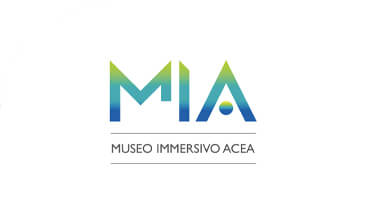
Visit the virtual museum about the history of the Acea Group
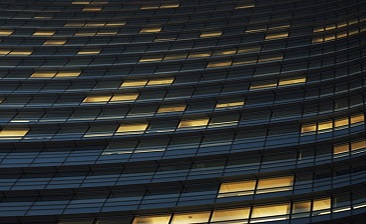
The channel for the commercial requests on land urbanisation
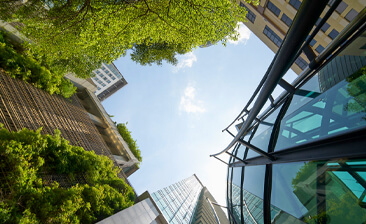
Acea turns the spotlight on the Rome Film Festival 2023

Acea is in the "Gold class" in the .trust research

Read more about our culture of inclusiveness